One of the final paintings by Manet is also one of his most famous works. Not just that, it has been extensively discussed by art historians since it was completed.
Édouard Manet (1832-1883) is often described as the artist who formed a bridge between Realism art and Impressionist art. Regardless of this description, he never lost his ideal of accurately depicting common scenes.
Let’s take a closer look at some of the most interesting facts about Manet’s “A Bar at the Folies-Bergère,” a fascinating work of art for several reasons.
1. It was completed a year before Manet passed away in the early 1880s
Édouard Manet is arguably one of the most important artists of the 19th century. He combined Realism with a painterly style that was unseen before.
He was highly influenced by Realism artists such as Gustave Courbet (1819-1877), but he also laid the foundation for the emerging Impressionist artists in the following decades.
He produced several controversial paintings during the first phase of his career, including works titled “Olympia” (1863-1865) and “Luncheon on the Grass” (1863).
The indifference he felt toward the art critics who showed little appreciation for his style was critical to his future success. It resulted in Manet being labeled as one of the founding fathers of modern art.
A Bar at the Folies-Bergère (1882) is often described as the final major painting that Édouard Manet completed during his lifetime as he passed away a year later in 1883.

2. It depicts a scene inside a popular nightclub in the 9th arrondissement of Paris
The painting features a complex composition in which the viewer appears to be standing in front of a bar at the Folies Bergère, a popular nightclub in Paris at the time.

Behind the bar, we see the waitress who is waiting for the customer to order drinks. Behind her is a mirror that shows the interior of the crowded establishment.
This means that the mirror is the view that the waitress had while she is serving the viewer who is on the opposite side of the counter.
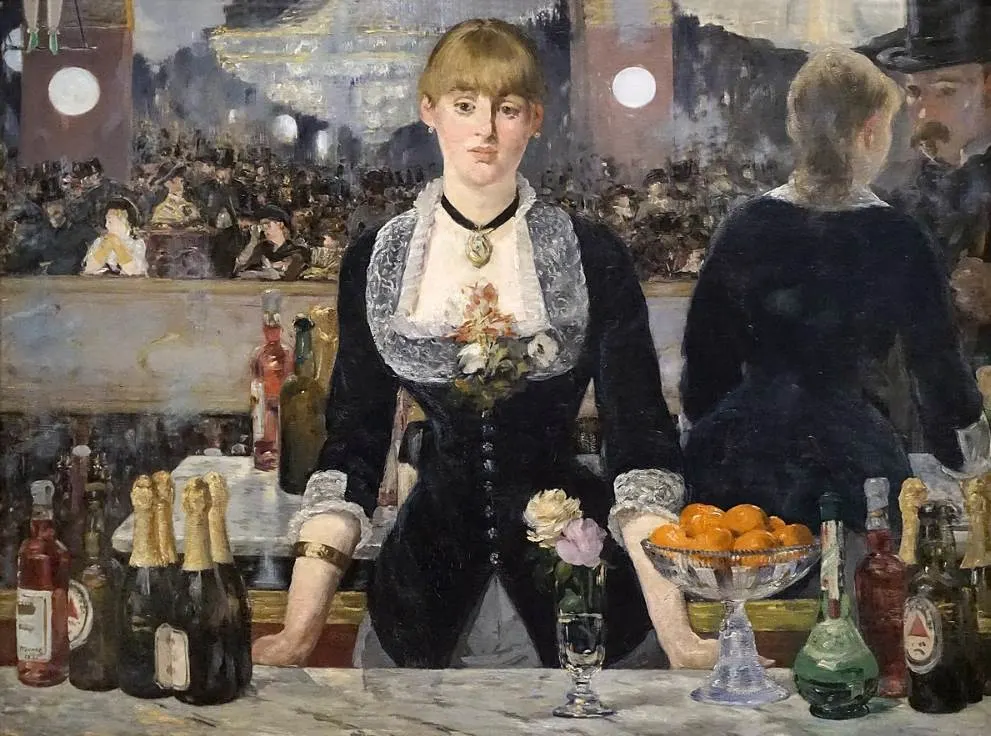
3. This establishment in Paris still exists today
The Folies-Bergère is an entertainment venue located at 32 Rue Richer in the 9th arrondissement of Paris. This is approximately between Montmartre and the Louvre Museum in Central Paris.
This place opened its doors for the first time in 1869 as the “Folies Trévise” but it was rebranded just 3 years later as the Folies Bergère.
At the time that manet completed his famous painting, it was already one of the most popular nightclubs in Paris and it held this reputation until the 1920s.
Josephine Baker, an American-born artist performed here during the Roaring Twenties. The Great Depression marked a decline in popularity.
Remarkably, the Folies-Bergère is still in business today and has seen performances of Dalida, Édith Piaf, and Frank Sinatra, to name just a few.

4. Manet used an optical trick when integrating the reflection in the mirror
One of the first things you’ll notice about this painting is that the reflection in the mirror doesn’t seem to make sense.
This has resulted in the discussion of whether or not we are looking into a mirror or not. This doubt was finally removed in 2000 when reconstruction shed light on the matter.
This study showed that the viewpoint indeed makes sense. The one-point viewing point of the painting emerges from a position on the right side of the bar, an area that Manet didn’t paint.
The woman behind the bar is slightly tilted to the left and the gentleman she is serving is looking away from her.
This would all make sense if Manet had included the right side of the counter, something that confuses the viewer regarding the vanishing point.
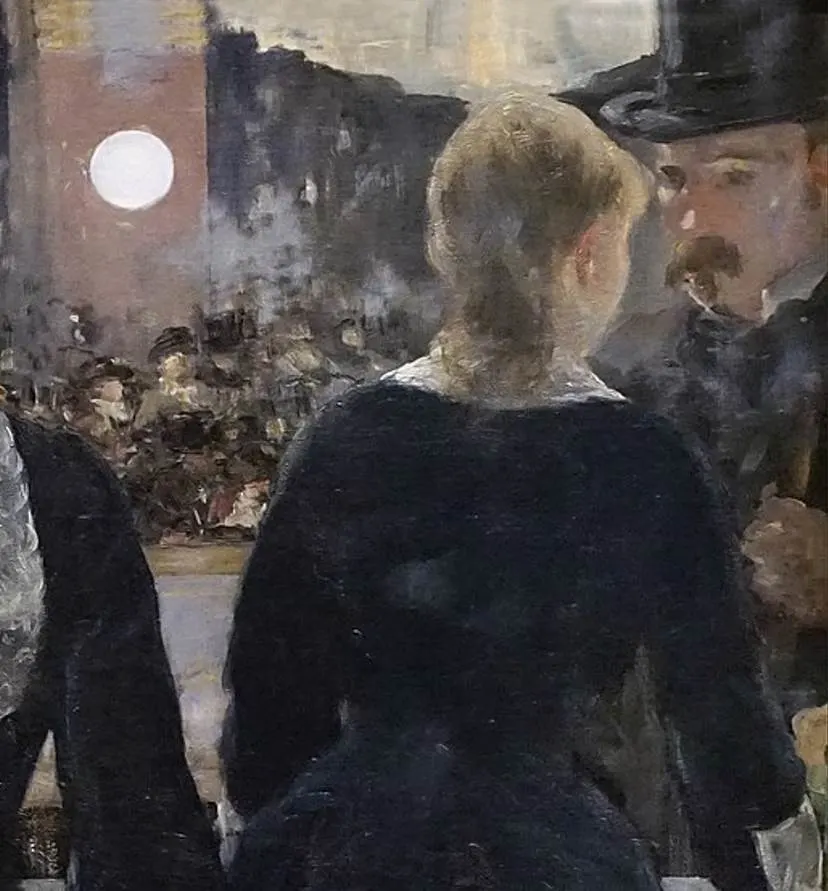
5. The woman was a real person and one item hints at her profession
Manet remained truthful to his goal of depicting accurate scenes derived from real life.
This is stressed by the fact that the woman behind the counter was a real waitress at the Folies-Bergère in the early 1880s.
Her name was Suzon and the artist had her pose as a model in his studio to complete this painting.
This nightclub was notorious for the many prostitutes that worked here, and that was most likely Suzon’s secondary profession.
The dish of oranges in front of her was a symbol for Manet to identify this. The abundance of bottles is a reference that some time with her could be bought as easily as a drink.
No wonder she has a rather cold stare and distant demeanor, don’t you think?
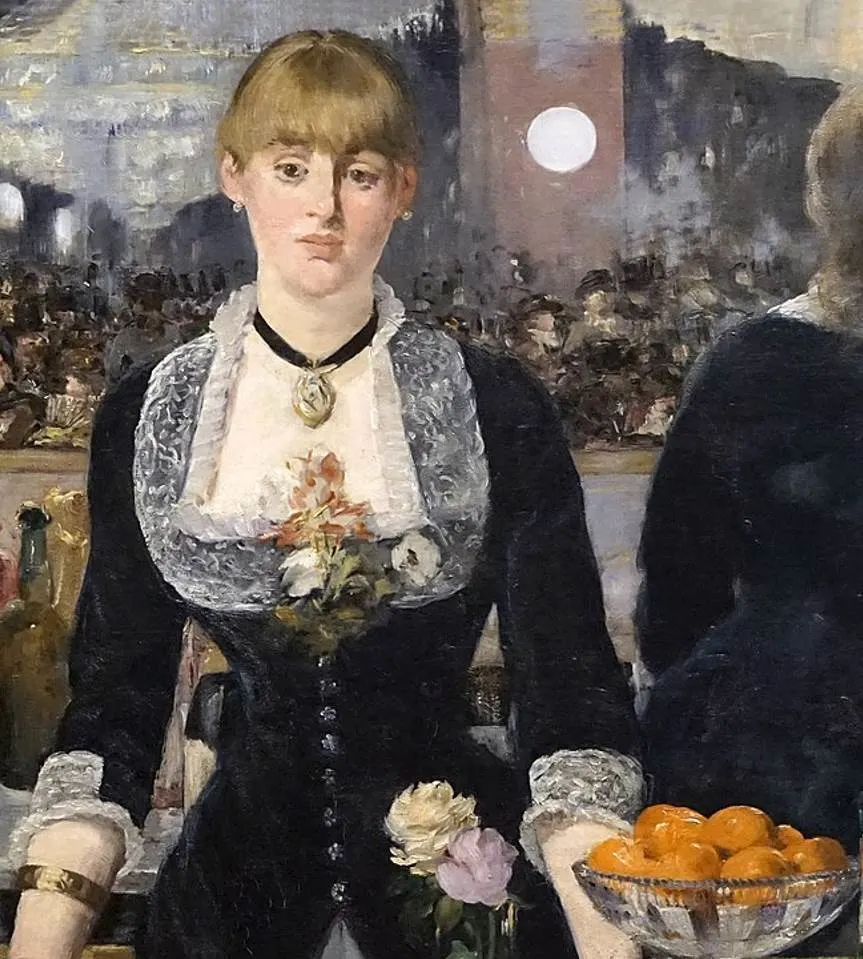
6. The beer bottles were imported from Britain and have a deeper meaning
France is the country of wine and that’s reflected in the Champagne bottles that are stashed on top of the counter.
We can also distinguish some beer bottles which feature a label with a red triangle. This makes it easy to determine that these were from the brand Bass Pale Ale, a British brand of beer.
Some art historians have speculated that the visibility of this label was because of the still lingering negative sentiment towards German beer following the Franco-Prussian War of 1870.
Before the event, German beers were far more popular in France.
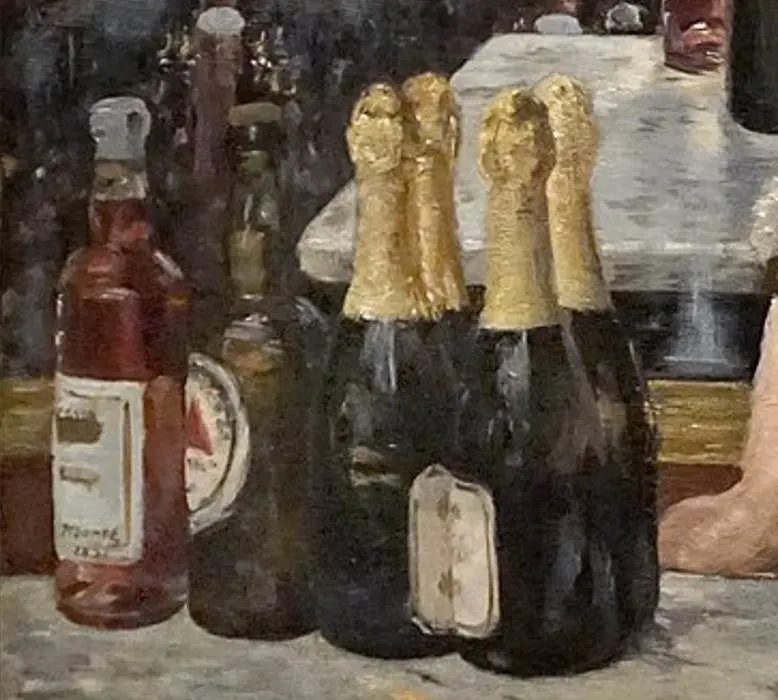
7. How big is A Bar at the Folies-Bergère by Édouard Manet?
The artist still painted some still lives of flowers after he completed this painting but these were much smaller than this amazing work of art.
A Bar at the Folies-Bergère by Édouard Manet is an oil on canvas painting that has dimensions of 96 × 130 centimeters (37.8 × 51.2 inches).
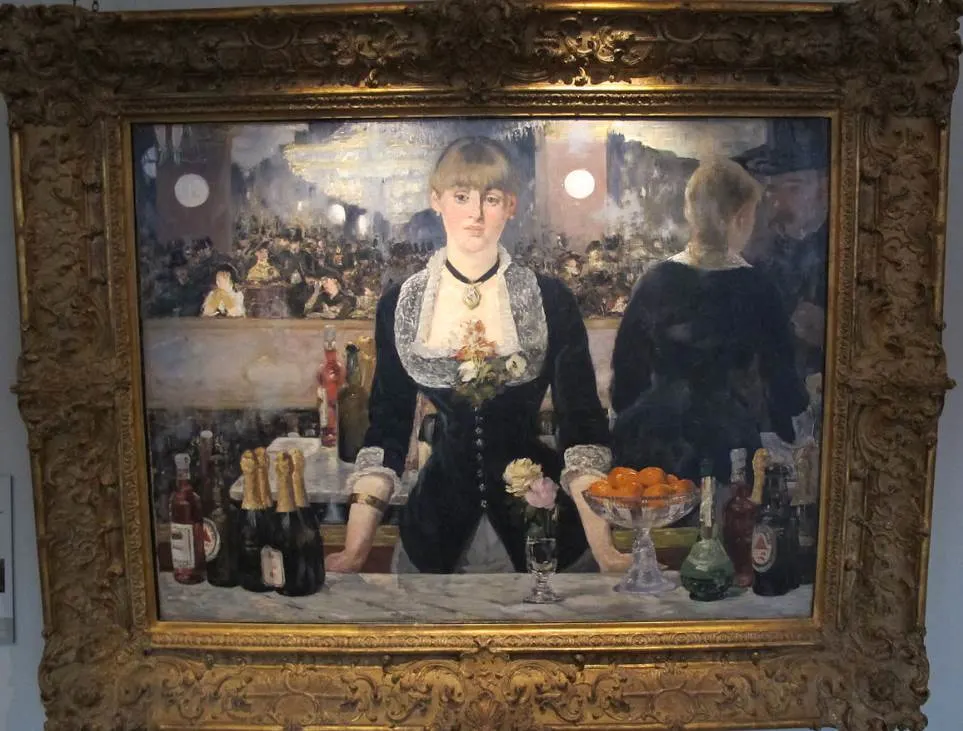
8. Where is the painting located today?
The painting was displayed at the Paris Salon of 1882 the year it was completed. It was subsequently acquired by Emmanuel Chabrier (1841-1894), a composer and pianist.
Chabrier was one of the many artistic friends of Manet and he amassed a great collection of Impressionist paintings during his lifetime. He liked this painting so much that he hung it above his piano.
Today, the painting is part of the collection of the Courtauld Gallery in London, a museum that is housed in Somerset House on the Strand in the heart of the city.

A Bar at the Folies-Bergère analysis
If you want to learn more about Manet’s masterpiece titled A Bar at the Folies-Bergère, check out this video published by the Courtauld Gallery in London:
